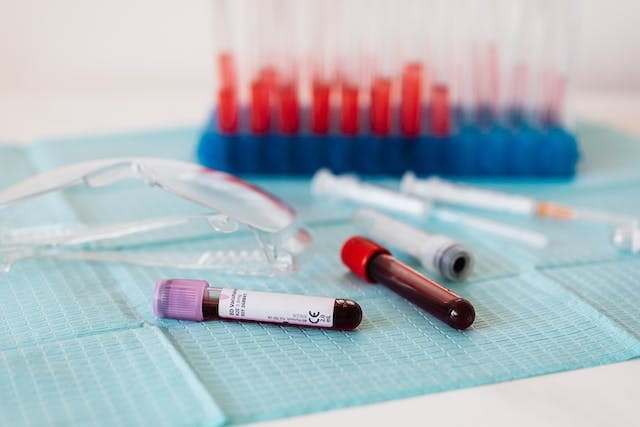
Here's What Happens if Erythrocyte Sedimentation Rate is High
Time to read 4 min
Time to read 4 min
Your ESR or erythrocyte sedimentation rate or red blood cells setting rate is checked when there is a risk factor of infection or inflammation. Your doctor can also identify any underlying risk of medical conditions present when they analyse your red blood cells through ESR.
Based on the blood test results of the blood sample analysis, the erythrocyte sedimentation rate ESR of the red blood cells can be checked. If the ESR test measures too high in the ESR blood test, then there may be a risk of infection or inflammation.
However, if the ESR tests too low in terms of the test tube sedimentation rate, then there may be a risk of cardiovascular disease, kidney disease, etc. That's why other tests are recommended to be conducted so that SED rate test can be the primary detector of something wrong in the body.
You would need more blood tests to check for specific conditions that may be leading to high or low ESR test results. While the SED rate test measures the functioning of the red blood cells, it can't detect specific conditions such as autoimmune diseases.
Your doctor may recommend both ESR and CRP (C reactive protein) tests as acute phase reactants to check the immune system's response and compare it to the normal range. This can help provide better information with regards to any risk factors when conducting an annual examination or routine test.
There are a range of symptoms that may be connected to high ESR, depending on whether there is any other factor such as deficiency or medical condition. Your ESR levels should be tested over time, to check for long-term trends and whether you are on medication.
Headaches can be one of the first few signs that there is a red blood cells related issue. The ESR test can be conducted in this case.
You can start to get serious fevers that may not be connected to other conditions or issues.
A sudden weight loss can be indicative of a red blood cells issue. You may experience this with deficiencies or other changes in the body, related to hormones or weight.
Long terms issues with sickle cell anaemia or red blood cells issues, can lead to bone degeneration or joint pain. You can get tested for other parameters, such as underlying conditions, calcium deficiency, etc. to rule out other problems.
Your oxidation processes may be impacted by red blood cells issues, leading to problems with proper energy management and fatigue.
Anaemia is a condition wherein the functioning of the red blood cells is significantly impacted. This can also lead to high ESR as a result of undetected problems with RBCs for an extended period.
If there is heavier clumping in the test tube of the red blood cells or erythrocytes, then there is faster settling in the test tube. This can be indicative of an inflammation or an infection, if the settling rate is faster than normal.
It is important to check your entire medical history prior to understanding what happens if erythrocyte sedimentation rate is high. This is so that the information and the test results can be contextualized, e.g. if you are on medication or are already managing an inflammatory condition.
There can be several reasons why ESR is too high, or there are issues with sedimentation rate with your red blood cells.
If there inflammation present then the clumping of the red blood cells in the test tube can be faster than normal.
Serious infections that are present in the body can lead to higher clumping and therefore heavier and faster settling.
Renal issues can be detected through primarily checking ESR and CRP. Kidney issues can lead to problems with red blood cells settling faster.
The inflammatory aetiology of coronary heart disease can be checked by analysing the ESR rates. The heart disease indicator is one of the potential causes of high ESR.
ESR, CRP, and ultrasound may be conducted to check for subacute thyroiditis. The ESR may be higher when there is a thyroid issue present, along with symptoms related to thyroid function.
If your ESR is too low in the blood test, then these factors could be underlying cause. You should get further testing done to check for other reasons that can be rooted out, or to determine whether an infection or inflammation may be present.
Blood disorders, such as Polycythaemia and high WBCs can be behind low ESR rates.
Heart issues, such as infections and potential risk of failure, can be detected with ESR rates.
Low plasma protein can be one of the reasons behind low ESR in the blood test.
It's important to continue getting tested and consulting with your doctor about the right next steps. You may need to go for further testing and monitoring if there is a significant risk present. You can start treatment after the underlying cause is detected through secondary testing.
* Medical Disclaimer - The following information is for educational purposes only. No information provided on this website, including text, graphic, and images, are intended as substitutes for professional medical advice. Please consult with your doctor about specific medical advice pertaining to your condition(s).
